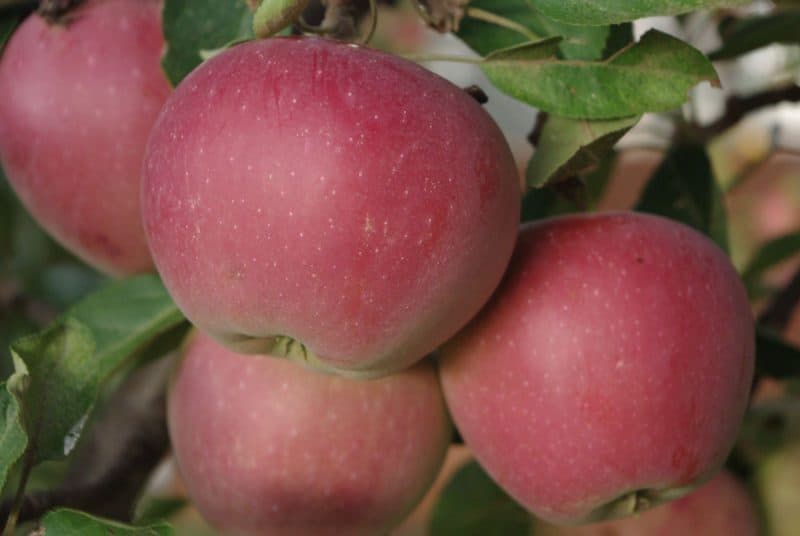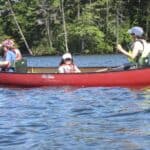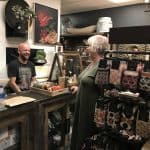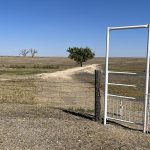
These apples from a backyard tree might go to waste, or they might be the start of a profitable side business.
By Becky McCray
Need an idea for your next small town or rural business? This one would make a good side hustle: Gather and resell fruit that would otherwise be wasted.
Think of all the fruit, berries and nuts that no one picks, especially in yards and public spaces in your town.
You don’t have to be in a big town, either. In my yard, we have apple, pear and pecan trees that produce far more than we can use. Then there are my neighbors’ half dozen fruit trees, the wild greens and seeds growing along the side of the road, not to mention the wealth of mulberries that drop each year. All that in a community of just 30 people.
It will be different where you live. My friends in Maine talk about gathering and cooking fiddlehead ferns, and Deb learned that you can forage for hazelnuts in Iowa in a workshop from her Legacy Learning group.
You might have heard food gathering called foraging, urban harvesting or gleaning. Whatever you call it, it’s an opportunity for a small business, especially a seasonal or part time gig.
Where to find free foods to gather
You can ask around to find good sources for fallen fruits.
- Who has lots of fruit trees in their yard?
- Who used to garden but is older now?
Knock on their door and ask for permission to harvest the fruits or plants they won’t be needing. You can even offer to split the harvest: part to them for having the trees or plants, part to you to sell.
You can also look around for fruit, berries or nuts that are free for anyone to take.
- Where is fruit falling on sidewalks or over fences into the alley?
- Where are berries or nut trees growing wild or in public places?
Look for classes or workshops in foraging or harvesting wild foods. Extension education groups or cultural heritage organizations may offer sessions.
Talk to your elders to learn what they remember about gathering wild foods. My grandmother told me about gathering wild greens for salad back in the Great Depression.
Be good neighbors
Learn to forage safely and for safe foods. Check your library for books about local wild foods you can check out. Ask librarians if they know of workshops and classes. Learn and follow the health and food safety regulations that apply in your area.
Don’t enter people’s private property without permission, of course. Ask permission if it’s not clear where the boundary is or it just seems like you ought to.
Leave some for others. You’re part of a community, so don’t strip shared trees bare or take more than you are pretty sure you can sell. Maybe take special care to leave some easy to reach fruits on lower branches for kids and elders who may come after you.
Be smart business people
Take small steps in your business by gathering a few samples, just enough to sell at the farmer’s market this weekend. Then you’ll have a better idea what and how much to gather on the next foraging trip.
Add value to your wild foods. Find out the health regulations, then try your hand at jams, jellies, roasted nuts or even baked goods.

Wild sand plums make great jelly that’s always in demand in Oklahoma. The bushes grow wild alongside many county roads.
You can add value to nuts like hard shell pecans by having them cracked. Learn how to thresh wild grains to make them more valuable to customers.
Even cleaning and displaying your fruits attractively will add value. Scout around the farmer’s market or grocery store for ideas how to make your own foods sell better.
The types of wild foods available and the ways you can add value to them will vary, so learn from those local workshops and local elders.
I bet you could even sell responsibly foraged flowers.

The county is just going to mow these wild sunflowers down. What if you cut some to sell at the farmers market?
Falling Fruits on the map
There’s a collaborative global map of free places to go look for foods to harvest at FallingFruit.org with entries in most countries including the US, Canada and Australia.
When you find good free food sources, add them to the map. As rural people, we know we depend on each other especially in tough times. That’s a good reason to share what you know.
You’re part of the Food Business Ecosystem
Gathering fruits and berries is just one part of a whole ecosystem of local food businesses. Find out more about creating a local food business ecosystem with this video we created with SaveYour.Town.











